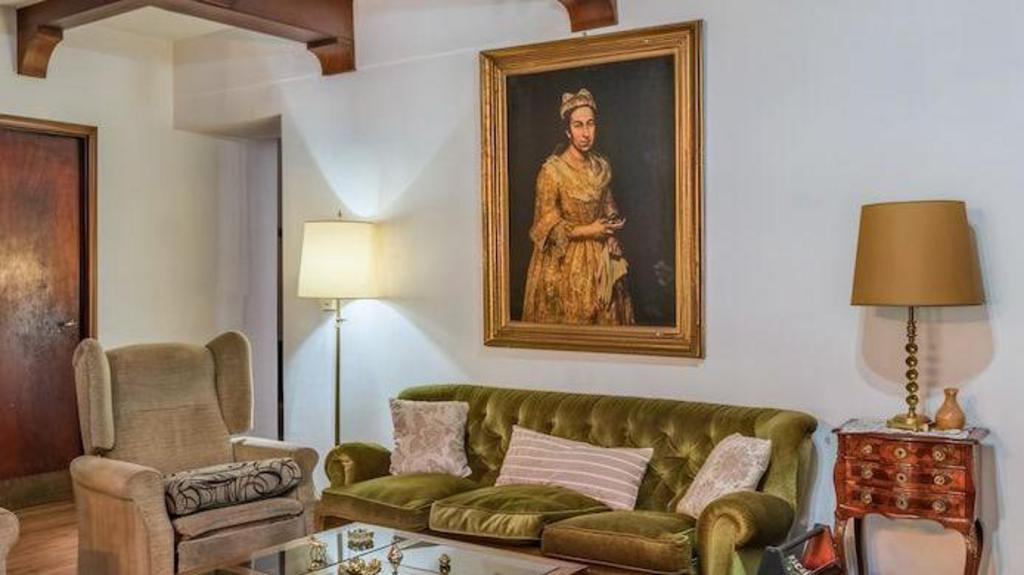“`html
A painting by an Italian master, stolen by the Nazis from a Jewish art dealer in Amsterdam, has been identified in images featured on an Argentinian real estate website. The discovery comes more than eight decades after the artwork was looted.
The “Portrait of a Lady” by Giuseppe Ghislandi was visible in photos showcasing a property near Buenos Aires. The residence was formerly owned by a high-ranking Nazi official who relocated to South America following World War II.
The painting, documented in a database of lost art from the war era, was located after the official’s daughter listed the house for sale, according to Dutch newspaper AD.
This artwork is one of numerous pieces stolen from art dealer Jacques Goudstikker, who aided Jewish individuals in escaping persecution during the war.
Goudstikker perished in an accident at sea while fleeing the Netherlands and is interred in England.
Over 1,100 pieces from Goudstikker’s collection were acquired through a forced sale by prominent Nazis, including Reichsmarschall Hermann Göring, following his death.
After the war, some of the stolen works were recovered in Germany and displayed at Amsterdam’s Rijksmuseum as part of the Dutch national collection. In 2006, Marei von Saher, Goudstikker’s daughter-in-law and sole surviving heir, regained possession of 202 items, AD reports.
However, one painting—the portrait of Contessa Colleoni by Giuseppe Ghislandi, a late-Baroque portraitist—remained missing until now.
AD’s investigation revealed wartime records suggesting the painting was in the possession of Friedrich Kadgien, an SS officer and a key financial advisor to Göring. Kadgien fled to Switzerland in 1945 before settling in Brazil and then Argentina, where he became a successful entrepreneur.
Kadgien—described as a “snake of the lowest sort” by American interrogators—passed away in 1979. A U.S. file reviewed by AD also contained notes on Kadgien, including the line: “Appears to possess substantial assets, could still be of value to us.”
The paper indicated that numerous attempts had been made over the years to contact the late Nazi’s two daughters in Buenos Aires regarding their father and the missing artworks, but without success.
Reporters experienced a breakthrough when one of Kadgien’s daughters listed the family home, once owned by her father, with a real estate agency specializing in high-end Argentinian properties.
“There is no reason to think this could be a copy,” stated Annelies Kool and Perry Schrier of the Cultural Heritage Agency of the Netherlands (RCE), who reviewed the images for AD.
Another looted artwork—a floral still-life by 17th-century Dutch painter Abraham Mignon—was also identified on one of the sister’s social media profiles, AD reports.
Since the photo was discovered, all attempts to communicate with the sisters have been unsuccessful, according to AD. One sister reportedly told the paper: “I don’t know what information you want from me, and I don’t know what painting you are talking about.”
Lawyers representing Goudstikker’s estate have affirmed their commitment to reclaiming the painting.
“My family is dedicated to recovering every single artwork stolen from Jacques’ collection and to restoring his legacy,” von Saher stated.
A posthumous art exhibition opens for former mayoress, Rachel Hall, who died from cancer last year.
The artwork, featuring ducks among flowers and greenery, was targeted last month.
There are three tunnels under a primary school playground, which were constructed in 1939.
People drew messages of hope and unity in response to Nazi graffiti spray-painted in Jersey.
Tobias Wedgwood wants to recover a tractor from the USS Hornet, which was sunk in the Pacific in 1943.
“`

